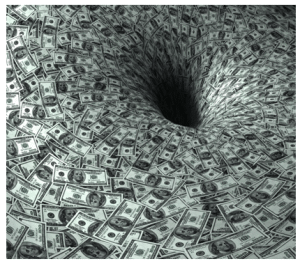According to the FDIC website, as of September 30, 2016 there were 5,170 FDIC insured commercial banks. They gave a total of 8,544 loans as of the third quarter of 2016. You might think that with so many banks, and loans given every year to business, there would be a surplus of loans for the small business owner. That is not always the case. Some small businesses have a lot of trouble getting a small business loan, even though news around the country claim small business borrowing is increasing.
For more about this and other news, follow the links below.
13 top U.S. microlenders for your small business
What is a microloan, and is one right for your small business?
If you’re a small-business owner on a quest for capital, there are several smart reasons to turn to nonprofit microlenders. These lenders go beyond making small loans to entrepreneurs and provide some benefits that traditional lenders don’t:
Profit is not their objective. Many microlenders are called mission-focused or mission-based lenders. They offer loans from government or nonprofit programs geared to helping disadvantaged communities, including areas that are struggling economically. Some microlenders also operate internationally, helping entrepreneurs in developing nations.
 Microlenders typically offer loans of $50,000 or less to startups and other small-scale operations. Some make bigger loans to more established businesses.
Microlenders typically offer loans of $50,000 or less to startups and other small-scale operations. Some make bigger loans to more established businesses.Many microlenders and nonprofits provide pro bono consulting and training, including helping small businesses build credit.
US small business borrowing rises as Trump elected president
Borrowing by small U.S. firms ticked up in November, data released on Thursday showed, as Americans unexpectedly elected Republican Donald Trump as their next president and investors bid up U.S. stocks on bets that tax cuts will boost profits.
The Thomson Reuters/PayNet Small Business Lending Index rose to 129.9 in November from a downwardly revised 119.8 in October. Measured from a year earlier, it was the first increase in six months. Movements in the index typically correspond with movements in gross domestic product growth a quarter or two ahead.
“Right now we’ve got this post-election bounce, because we know who will be in office,” said Bill Phelan, PayNet’s chief executive and founder. “Is this going to continue into a new era of growth or no? That’s unclear.”
Small Business Health Reimbursement Accounts Resurrected For 2017
Stand-alone HRAs are back for 2017. Employers don’t have to wait for the repeal of Obamacare to fund stand-alone health reimbursement accountsthat employees can use to pay for medical expenses, including health insurance coverage on the individual market. Tucked into the year-end 21stCentury Cures Act, Congress resurrected these HRAs (“qualified small employer health reimbursement arrangements”) for employers with fewer than 50 employees.
“I’ve been contacting small employer clients, telling them, ‘It looks like we can bring your plan back to life,’” says Amy Gordon, an employee benefits lawyer with McDermott Will & Emery in Chicago. “This was an unexpected surprise.”
Stand-alone HRAs were banned under the Affordable Care Act (aka Obamacare) because they didn’t meet credible coverage rules (HRAs tied to high-deductible health plans and limited HRAs which cover retiree medical expenses or just dental and vision weren’t banned and are still viable). Employers had to freeze stand-alone HRAs and not make any more contributions to them.




